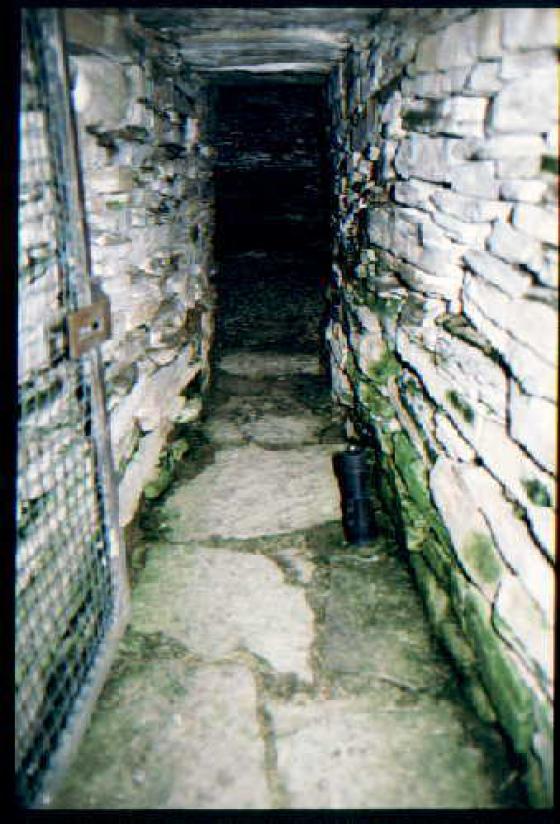
‘back’ of broch mound seen from track coming down from side of Vishall Hill

‘back’ of broch mound seen from track coming down from side of Vishall Hill

view of mound coming along shore from northwards

view of mound from shoreline facing it shows broch goes right down almost to shore, as evidenced by good wall exposure

well-exposed basal wall just above shoreline, you probably need the right tide to see it

sideways look at basal wall of broch mound

upper part of northern side with ‘window’ into wall

exposed wall near top of northern side

view of lumps and bank from top odf broch tower mound

southern view from the shore showing low turf-covered slab path/wall heading for front of broch mound – perhaps proof of Hedges’ conjecture that boats were hauled here

from the broch mound to the bank behind the later enclosure
Even taking photos along the way it took me under 50 minutes to reach the broch mound from the Evie Road, but you can get by car much of the way. Just north of Woodwick is the Ardwick Road, go up this to the top where there are several farms clustered together. Behind Arwick there is a half-snapped-off sign for the beach (wonderful how markers self-destruct in Orkney) and you continue down past Lower Bisgarth to where there is a parting of the ways. From Vishall Hill you can make out the broch because of the brightness of the later drywall enclosure stuck behind it. On the left a farmtrack goes to the sands by the northern side of the lochan (with its almost vestigial ayre) while on the right you take what is almost a farm road down to the shore and turn to your right for the Ness of Woodwick. I went at low tide but it seemed to me that you could walk the outside of the field with care if the tide were too high. Even though on the map the Craig of Ritten juts out it felt to me more as if the broch mound was tucked into the land. Though the 20’ internal wall arc mentioned in the report is indeed hidden now there is another exposed at the bottom of the tower, not much above the shore so easily masked if you visit on an incoming tide. It struck me that the tower must survive under the mound almost complete. All over the mound you can find the odd stone. However the nature of a broch is that these being isolated I could not tell if these were simply part of the massively wide broch tower wall or parts of other structures. Clambering up to the top I could see several lumps and bumps inside the medaeval/’modern’ enclosure and just beyond it. What with the surviving height of the broch tower and the topography I would deem it likely that the rest of the broch settlement survives under the turf. I wish I could find my Photoshopped version of the ‘original’ Google Earth image I found, as it clearly showed the tower outworks as a surviving plan despite the ground cover. On the composite image from two satellites you can still make out a figure-of-eight with one side a dark line of inner and outer broch tower arcs and connection (?entrance side). Also away from the main broch you can see the bumps I saw. Most obvious is a beetle shaped oval directly adjoining, almost entirely contained by one side of the ‘modern’ enclosure. Which makes the site extend inland like the other Evie brochs.
Ness of Woodwick broch, NMRS record no. HY42SW 9, aka the Craig of Ritten/Rittin. The ‘crag’ is an impressive mound with dimensions estimated as 50-60 feet across with an inner diameter about half that – in 1946 at the seaward side to the NE about 20’ of outer wall (thought to be the outer wall-face) could be observed. No midden was seen. Twenty years later most of this outer wall was overgrown like the rest of the mound. Hedges notes that the rocky outcrops and sand below would be a good place to haul up a boat.







































































































































































